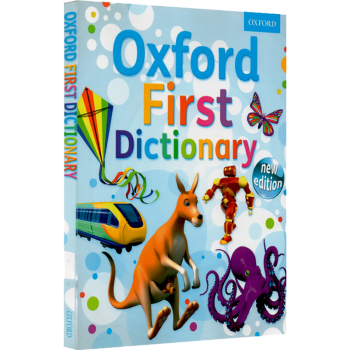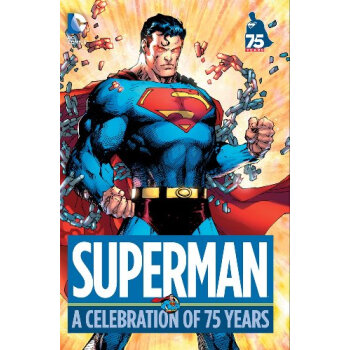

具体描述
内容简介
When Superman debuted seventy-five years ago, it was not merely the beginning for one character, but for an entire genre. The phrase "super hero" had yet to be coined when ACTION COMICS #1 hit newsstands in 1938, but once Superman entered the scene, effortlessly lifting a car above his head on that first iconic cover, the character paved the way for each of the hundreds (if not thousands) of super-powered heroes written since.SUPERMAN: A CELEBRATION OF 75 YEARS gathers a range of stories featuring the first and greatest super hero, highlighting the many roles the Man of Steel has played over the decades. In these celebrated stories, Superman is in turns the Herculean champion, the lonely alien survivor, the super-powered Boy Scout and the soul-searching leader. Over the course of seventy-five years, watch as the character grows from a simple strongman to the beloved international symbol he is today!
This Volume Collects:
("Superman, Champion of the Oppressed") / ("War in San Monte") -- ACTION COMICS #1-2 (1938) Writer: Jerry Siegel, Artist: Joe Shuster
"How Superman Would End the War" -- Look Magazine (1940) Writer: Jerry Siegel, Artist: Joe Shuster
"Man or Superman?" -- SUPERMAN #17 (1942) Writer: Jerry Siegel, Penciller: Joe Shuster, Inker: Joe Sikela
"The Origin of Superman" -- SUPERMAN #53 (1948) Writer: Bill Finger, Penciller: Wayne Boring, Inker: Stan Kaye
"The Mightiest Team in the World" -- SUPERMAN #76 (1952) Writer: Edmond Hamilton, Penciller: Curt Swan, Inker: John Fishchetti
"The Super-Duel in Space" -- ACTION COMICS #242 (1958) Writer: Otto Binder, Artist: Al Plastino
?"The Girl From Superman's Past" -- SUPERMAN #129 (1959) Writer: Bill Finger, Penciller: Wayne Boring, Inker: Stan Kaye
"Superman's Return to Krypton" -- SUPERMAN #141 (1960) Writer: Jerry Siegel, Penciller: Wayne Boring, Inker: Stan Kaye
"The Death of Superman" -- SUPERMAN #149 (1961) Writer: Jerry Siegel, Penciller: Curt Swan, Inker: George Klein
"Must There Be a Superman?" -- SUPERMAN #247 (1972) Writer: Eliot S. Maggin, Penciller: Curt Swan, Inker: Murphy Anderson
?"Rebirth" -- ACTION COMICS #544 (1983) Writer: Marv Wolfman, Artist: Gil Kane
"The Living Legends of Superman" (excerpt) -- SUPERMAN #400 (1985) Writer: Elliot S. Maggin, Artist: Frank Miller
"For the Man Who Has Everything" -- SUPERMAN ANNUAL #11 (1985)Writer: Alan Moore, Artist: Dave Gibbons
"The Name Game" -- SUPERMAN #11 (1987)? Writer/Penciller: John Byrne, Inker: Karl Kesel
"Doomsday" -- SUPERMAN #75 (1993)? Writer/Penciller: Dan Jurgens, Inker: Brett Breeding
"What's So Funny About Truth Justice and the American Way?" -- ACTION COMICS #775 (2001)? Writer: Joe Kelly, Pencillers: Doug Mahnke, Lee Bermejo
Inkers: Tom Nguyen, Dexter Vines, Jim Royal, Jose Marzan, Jr., Wade Von Grawbadger, Wayne Faucher
"Question of Confidence" -- Mythology: The DC Comics Art of Alex Ross (2003)? Writer: Chip Kidd, Artist: Alex Ross
"The Incident" -- ACTION COMICS #900 (2011)? Writer: David S. Goyer, Artist: Miguel Sepulveda
"The Boy Who Stole Superman's Cape" -- ACTION COMICS #0 (2012)?? Writer: Grant Morrison, Artist: Ben Oliver
作者简介
Born in 1914 in Cleveland, Ohio, Jerome Siegel was, as a teenager, a fan of the emerging literary genre that came to be known as science fiction. Together with schoolmate Joe Shuster, Siegel published several science-fiction fan magazines, and in 1933 they came up with their own science-fiction hero -- Superman. Siegel scripted and Shuster drew several weeks' worth of newspaper strips featuring their new creation, but garnered no interest from publishers or newspaper syndicates. It wasn't until the two established themselves as reliable adventure-strip creators at DC Comics that the editors at DC offered to take a chance on the Superman material -- provided it was re-pasted into comic-book format for DC's new magazine, ACTION COMICS.Siegel wrote the adventures of Superman (as well as other DC heroes, most notably the Spectre, his co-creation with Bernard Baily) through 1948 and then again from 1959-1966, in the interim scripting several newspaper strips including Funnyman and Ken Winston. Jerry Siegel died in January, 1996.
Joseph Shuster was born in 1914 in Toronto, Canada. When he was nine, his family moved to Cleveland, Ohio, where Shuster met Jerry Siegel. The two became fast friends and collaborators; together, they published the earliest science-fiction fan magazines, where Shuster honed his fledgling art skills. In 1936, he and Siegel began providing DC Comics with such new features as Dr. Occult, Slam Bradley and Radio Squad before selling Superman to DC in 1938.? Influenced by such comic-strip greats as Wash Tubbs' Roy Crane, Joe Shuster drew Superman through 1947, after which he left comic books to create the comic strip Funnyman, again with Siegel. Failing eyesight cut short his career, but not before his place in the history of American culture was assured. Shuster died of heart failure on July 30, 1992.,,,
用户评价
这本书简直是一场穿越时空的盛宴!当我翻开《Superman: A Celebration of 75 Years》时,仿佛瞬间被卷入了这个蓝色披风的传奇世界。不仅仅是那些经典的漫画封面和令人热血沸腾的故事情节,这本书更像是一位老朋友,娓娓道来超人如何从一个不起眼的漫画人物,一步步成长为全球性的文化符号。我特别喜欢它对超人创作初衷的深入挖掘,以及他如何反映了那个时代人们的希望与梦想。那些早期的黑白漫画,虽然画面朴实,却充满了蓬勃的生命力,每一笔都凝聚着创作者的匠心。而随着时间的推移,超人形象的演变,服装的更新,故事的深化,都清晰地呈现在眼前。这本书的印刷质量也堪称一流,色彩鲜艳,细节饱满,仿佛能感受到纸张下那股强大的力量。它不仅是一本回顾展,更是一次关于英雄主义、关于善良、关于永不放弃的精神的深刻探讨。读完之后,我感觉自己又重新充满了力量,仿佛超人就在我的身边,守护着这个世界。
评分这不仅仅是一本画册,更是一部浓缩的超人编年史,它的厚重感和信息量让人惊叹。我一直对超人的起源故事和他的多重身份感到好奇,而这本书则提供了详尽的解答。从卡尔·艾尔降临地球,到克拉克·肯特在美国堪萨斯州的成长,再到他如何运用自己的超能力,这本书一步步揭示了这个角色的成长轨迹。我尤其欣赏书中对不同时代超人漫画风格的呈现,从黄金时代的纯粹英雄主义,到白银时代的科幻冒险,再到现代漫画的复杂人性探讨,每一个时期的代表性作品都被精心挑选并加以解读。那些关于超人世界观的构建,关于他的亲友团,关于他与宿敌的恩怨纠葛,都穿插其中,让读者对这个角色的理解更加立体和深刻。而且,这本书的编排非常有条理,时间线清晰,让你能很直观地感受到超人形象和故事的演变。对于任何一个曾经被超人所打动的读者来说,这都是一本不容错过的珍宝,它让你重新认识并爱上这个经久不衰的传奇。
评分我一直以为我足够了解超人,直到我拿到这本《Superman: A Celebration of 75 Years》。这本书打破了我原有的认知,它像是一个百科全书,又像是一位博学的导游,带领我深入超人世界的每一个角落。书中关于超人技术和力量体系的探讨,以及他所面临的各种道德困境,都让我受益匪浅。我特别喜欢它对超人与现实世界联系的剖析,探讨了超人在不同社会背景下所扮演的角色,以及他如何反映了人们对于公正、自由和希望的渴望。那些不同时期艺术家们对超人的独特诠释,每一幅画面都仿佛诉说着一个故事,充满了艺术的张力和情感的共鸣。这本书的深度和广度都超出了我的预期,它不仅展示了超人的强大,更展现了他的脆弱、他的挣扎,以及他作为“人”的一面。这本书让我对超人这个角色有了更全面的理解,也对漫画艺术本身有了更深的敬意。
评分《Superman: A Celebration of 75 Years》带给我的是一种前所未有的震撼与感动。它不仅仅是回顾了一个漫画英雄的75年历程,更是梳理了一个时代精神的变迁。书中那些跨越时空的插画和故事片段,如同打开了一扇扇尘封的记忆之门,让我回忆起童年时第一次接触超人的那份纯粹的喜悦。我惊叹于超人形象是如何在不同的历史时期被赋予新的内涵,如何在社会变革中保持其核心的善良与正义。本书的编辑团队无疑是花了巨大的心血,他们不仅仅是收集了大量的珍贵资料,更是在这些资料中挖掘出了深层的意义。每一次翻页,都能发现新的惊喜:可能是某个被遗忘的配角,可能是某个鲜为人知的创作细节,亦或是某个触动人心的哲学思考。这本书让我看到了一个英雄的诞生、成长、辉煌,以及他所代表的那些永恒的价值。它不仅仅是给粉丝的礼物,更是给所有对英雄主义、对希望、对人性光辉有所期待的人们的一本深刻读物。
评分这本书的出现,让我对“英雄”这个词有了全新的定义。它不仅仅是关于超人的75年,更是关于人类对于美好事物的不懈追求。我被书中那些令人振奋的故事所吸引,也为超人身上所蕴含的坚定信念和无私奉献精神所折服。这本书不仅仅是一本回顾性的作品,更像是一次思想的启迪。它让我思考,在现实生活中,我们如何才能成为自己心中的“超人”,如何在平凡的生活中展现不平凡的力量。书中的每一个章节,都像是一堂关于勇气、关于责任、关于爱的课程。那些充满想象力的宇宙设定,那些感人至深的友情与爱情,都为我打开了一个全新的视角。我尤其赞赏书中对超人成长过程中遇到的挑战和考验的描写,这让我看到了一个英雄并非天生,而是经过不断的磨砺和成长。这本书让我感觉自己不仅仅是在阅读,更是在经历一场心灵的洗礼。
评分Superman: A Celebration of 75 Years
评分送货迅速,非常好,下次再买!
评分比外面便宜原装正品
评分Superman: A Celebration of 75 Years
评分75周年必买系列
评分经典的英语故事书,包含了很多时期的作品,开本一般,内容还是不错的。书有破损。
评分Superman: A Celebration of 75 Years
评分非常好的一本书,包括了很多超人漫画
评分很好很不错,京东一如既往的好,发货快,包裹严实,好评,下次继续来
相关图书
本站所有内容均为互联网搜索引擎提供的公开搜索信息,本站不存储任何数据与内容,任何内容与数据均与本站无关,如有需要请联系相关搜索引擎包括但不限于百度,google,bing,sogou 等
© 2025 book.coffeedeals.club All Rights Reserved. 静流书站 版权所有

![Cuba 8 [平装] pdf epub mobi 电子书 下载](https://pic.windowsfront.com/19545112/55deab71N9e17d6fc.jpg)

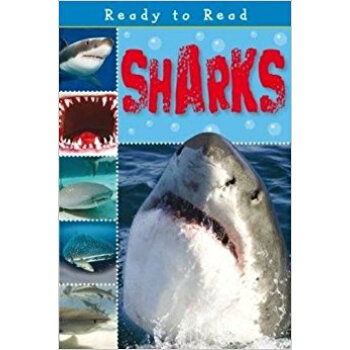
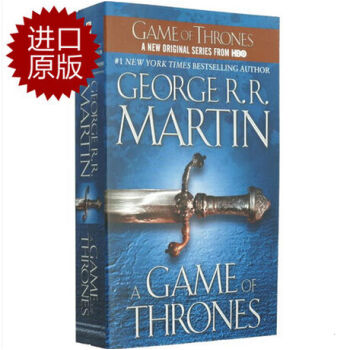


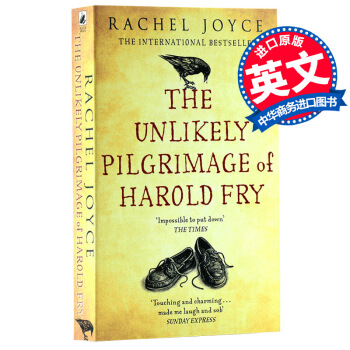
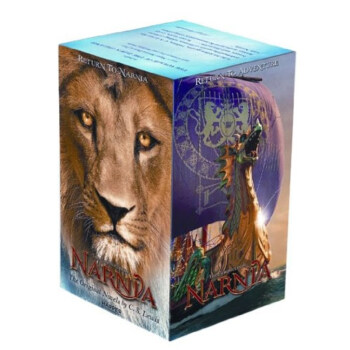

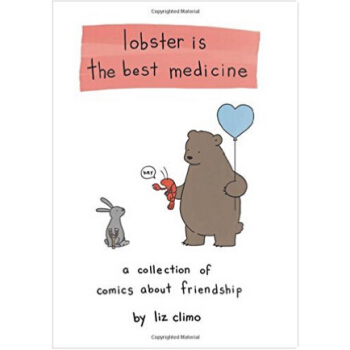
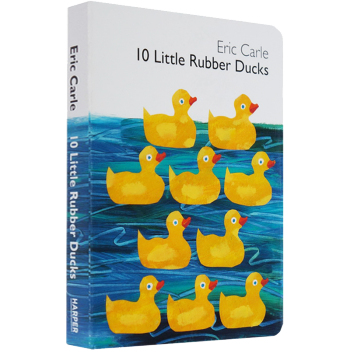

![[现货]英文原版 精装莫奈画集 印象派大师Monet or the Triumph of… pdf epub mobi 电子书 下载](https://pic.windowsfront.com/10245416147/5afe9c62Nded51267.jpg)




